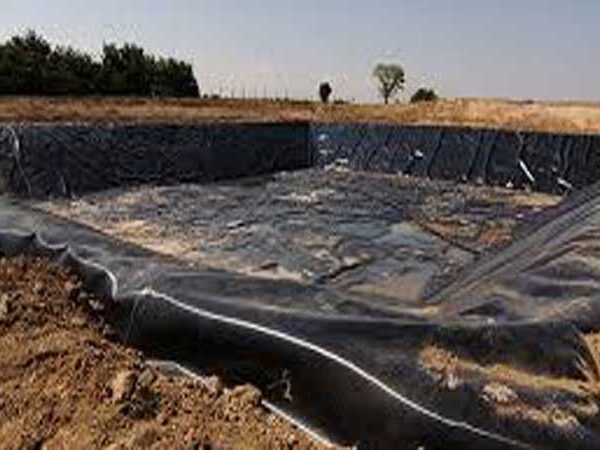As global environmental concerns continue to grow, industries and governments are increasingly turning to innovative solutions to mitigate environmental impacts. High-Density Polyethylene (HDPE) geomembranes have emerged as a crucial tool in this endeavor, playing a significant role in environmental protection across various sectors. This blog post explores the multifaceted role of HDPE geomembranes in safeguarding our environment, with a particular focus on applications in the United Arab Emirates (UAE) and the HDPE Geomembrane UAE market.
- Groundwater Protection
One of the primary environmental benefits of HDPE geomembranes is their ability to protect groundwater resources from contamination.
Key Applications:
- Landfill Liners: HDPE geomembranes create an impermeable barrier between waste and underlying soil, preventing leachate from seeping into groundwater.
- Industrial Containment: In industries like oil and gas, HDPE geomembranes are used for secondary containment around storage tanks and processing areas.
- Mining Operations: Heap leach pads and tailings ponds lined with HDPE geomembranes prevent toxic substances from polluting groundwater.
UAE Context: In the UAE, where groundwater resources are scarce and precious, HDPE geomembranes play a crucial role in protecting aquifers from contamination. The HDPE Geomembrane UAE market has seen significant growth in landfill and industrial applications, contributing to the nation’s environmental protection efforts.
- Soil Conservation
HDPE geomembranes contribute to soil conservation by preventing contamination and erosion.
Key Applications:
- Contaminated Site Remediation: HDPE geomembranes are used to cap contaminated sites, preventing the spread of pollutants.
- Erosion Control: In areas prone to erosion, HDPE geomembranes can stabilize slopes and prevent soil loss.
- Agricultural Runoff Management: Lining agricultural ponds and channels with HDPE geomembranes prevents pesticides and fertilizers from leaching into surrounding soil.
UAE Perspective: In the UAE’s arid climate, soil conservation is critical. HDPE geomembranes are increasingly used in land reclamation projects and to protect valuable agricultural land from salinization and contamination.
- Water Conservation
HDPE geomembranes play a vital role in water conservation efforts, particularly crucial in water-scarce regions.
Key Applications:
- Reservoir Lining: HDPE geomembranes prevent water loss through seepage in reservoirs and irrigation ponds.
- Canal Lining: Lining irrigation canals with HDPE geomembranes significantly reduces water loss during transportation.
- Artificial Recharge Basins: HDPE-lined basins help in efficient groundwater recharge, crucial for sustainable water management.
HDPE Geomembrane UAE Impact: The UAE has implemented large-scale water conservation projects using HDPE geomembranes, including lining of major reservoirs and the implementation of advanced irrigation systems in agriculture.
- Waste Management
In the realm of waste management, HDPE geomembranes are indispensable for environmental protection.
Key Applications:
- Landfill Caps: HDPE geomembranes are used to cap closed landfills, preventing rainwater infiltration and gas emissions.
- Hazardous Waste Containment: Specialized HDPE geomembranes provide secure containment for hazardous waste storage facilities.
- Composting Facilities: HDPE geomembranes line composting pads, preventing nutrient-rich runoff from contaminating surrounding areas.
UAE Advancements: The UAE has made significant strides in modernizing its waste management infrastructure. State-of-the-art landfills and waste treatment facilities across the emirates utilize HDPE geomembranes to ensure environmental compliance and protection.
- Air Quality Improvement
While perhaps less obvious, HDPE geomembranes also contribute to air quality improvement.
Key Applications:
- Landfill Gas Collection: HDPE geomembranes help in the efficient collection of landfill gases, reducing greenhouse gas emissions.
- Odor Control: In wastewater treatment plants and composting facilities, HDPE geomembranes help contain odors, improving local air quality.
- Dust Suppression: In mining and construction, HDPE geomembranes can be used to cover stockpiles, reducing dust emissions.
UAE Initiatives: As part of its commitment to improving air quality, the UAE has implemented stringent regulations for landfill gas management and industrial emissions control, where HDPE geomembranes play a crucial role.
- Ecosystem Preservation
HDPE geomembranes contribute to ecosystem preservation by creating barriers between human activities and natural environments.
Key Applications:
- Wetland Protection: HDPE geomembranes can be used to line artificial wetlands or protect natural wetlands from contamination.
- Habitat Creation: In restoration projects, HDPE geomembranes can be used to create controlled environments for habitat development.
- Coastal Protection: HDPE geomembranes are used in coastal engineering projects to prevent saltwater intrusion and protect fragile coastal ecosystems.
UAE Conservation Efforts: The UAE has several ongoing ecosystem preservation projects, including mangrove restoration and desert ecosystem protection, where HDPE geomembranes are utilized for water management and contamination prevention.
- Climate Change Mitigation
HDPE geomembranes indirectly contribute to climate change mitigation efforts.
Key Applications:
- Carbon Sequestration: By enabling effective landfill management, HDPE geomembranes help in reducing methane emissions, a potent greenhouse gas.
- Water Efficiency: The water conservation enabled by HDPE geomembranes reduces the energy needed for water treatment and transportation, lowering carbon emissions.
- Sustainable Agriculture: HDPE geomembranes support water-efficient agricultural practices, reducing the carbon footprint of food production.
UAE’s Green Initiatives: The UAE’s commitment to reducing its carbon footprint includes the adoption of technologies like HDPE geomembranes in various sectors to improve resource efficiency and reduce environmental impact.
Challenges and Future Outlook
While HDPE geomembranes offer significant environmental benefits, there are challenges to address:
- End-of-Life Management: Developing efficient recycling and disposal methods for used HDPE geomembranes is crucial for full lifecycle environmental protection.
- Installation Quality: Proper installation is critical to ensure the environmental benefits of HDPE geomembranes are fully realized.
- Public Awareness: Increasing understanding of the environmental benefits of HDPE geomembranes can drive wider adoption and support.
Looking ahead, the role of HDPE geomembranes in environmental protection is set to grow:
- Technological Advancements: Ongoing research is focused on improving the performance and sustainability of HDPE geomembranes.
- Regulatory Drivers: Stricter environmental regulations globally are likely to increase the demand for effective containment solutions like HDPE geomembranes.
- Integration with Smart Technologies: The combination of HDPE geomembranes with sensors and IoT technologies promises enhanced environmental monitoring and protection capabilities.
Conclusion
HDPE geomembranes play a multifaceted and crucial role in environmental protection. From safeguarding water resources to supporting ecosystem preservation, these versatile materials are at the forefront of efforts to mitigate human impact on the environment. The HDPE Geomembrane UAE market exemplifies how these materials can be effectively deployed to address environmental challenges in diverse and demanding conditions.
As we continue to grapple with pressing environmental issues like climate change, water scarcity, and pollution, the importance of technologies like HDPE geomembranes cannot be overstated. By providing robust, long-lasting, and effective containment solutions, HDPE geomembranes are not just protecting our environment today but are helping to ensure a more sustainable future for generations to come.


